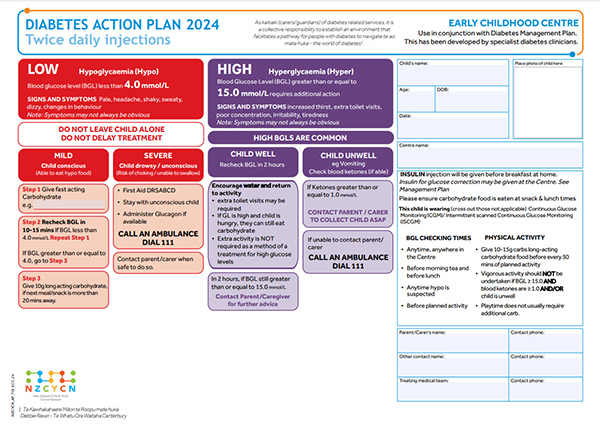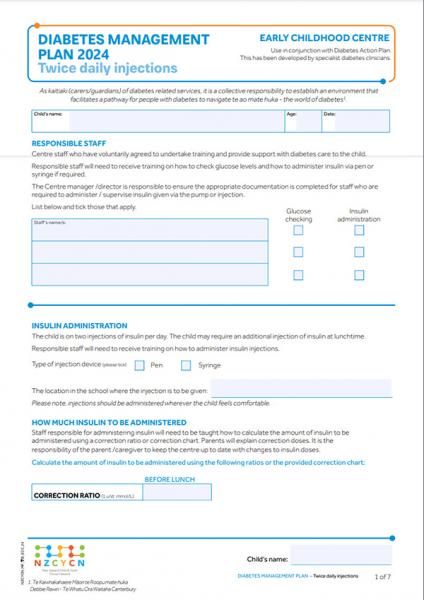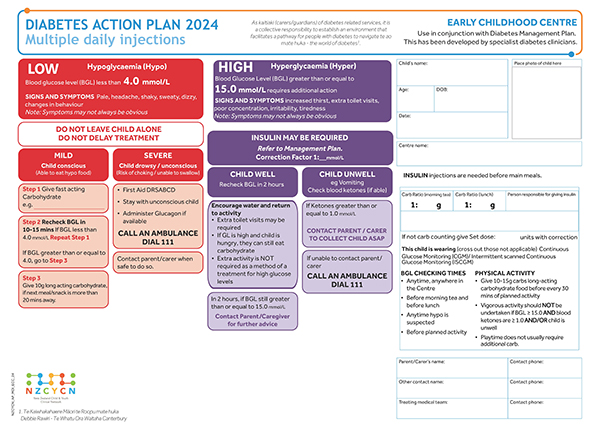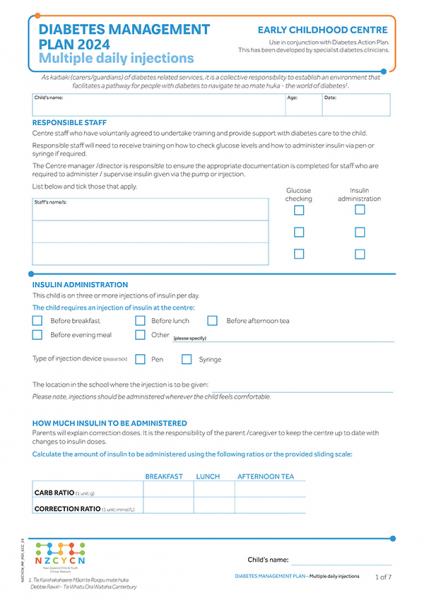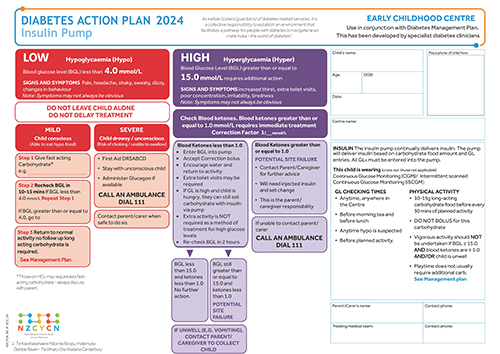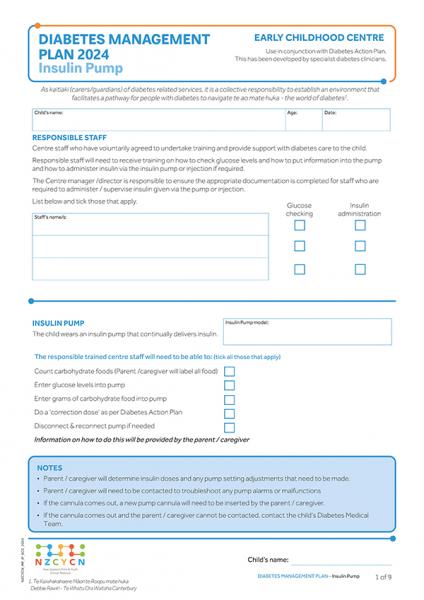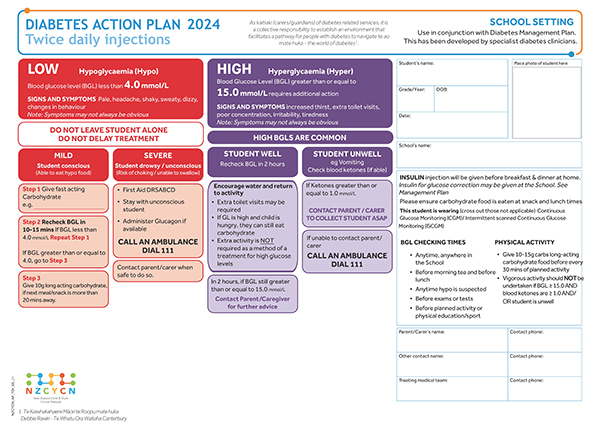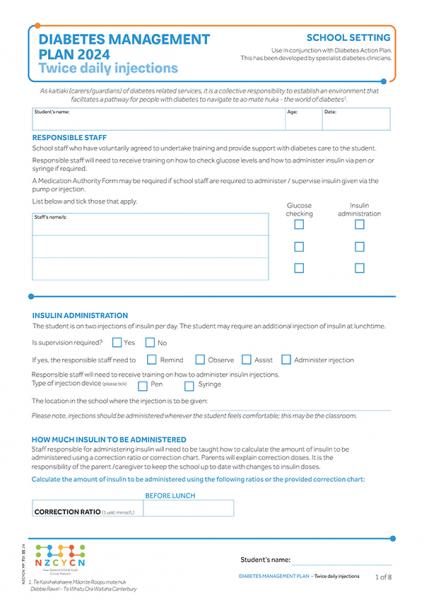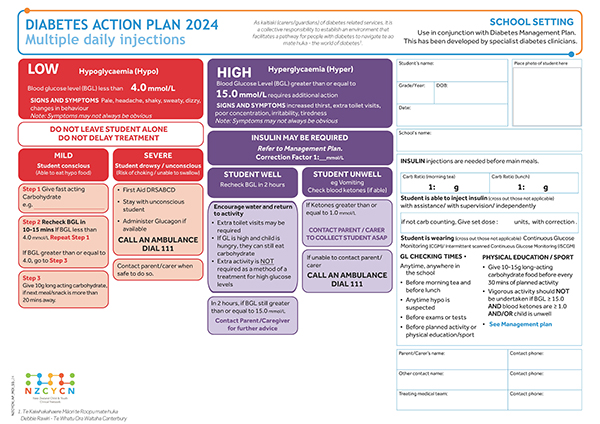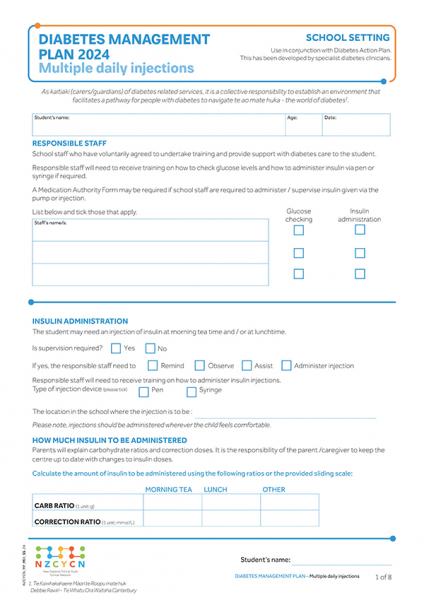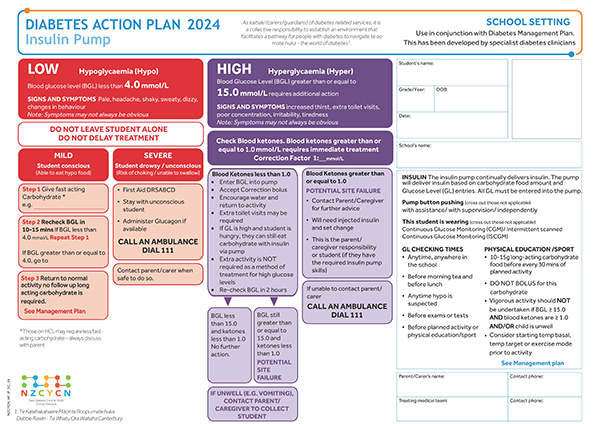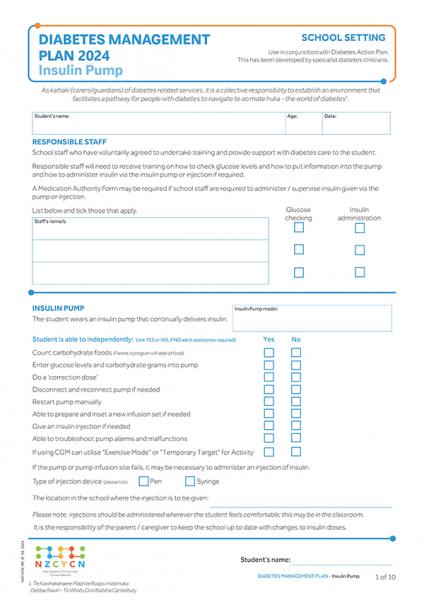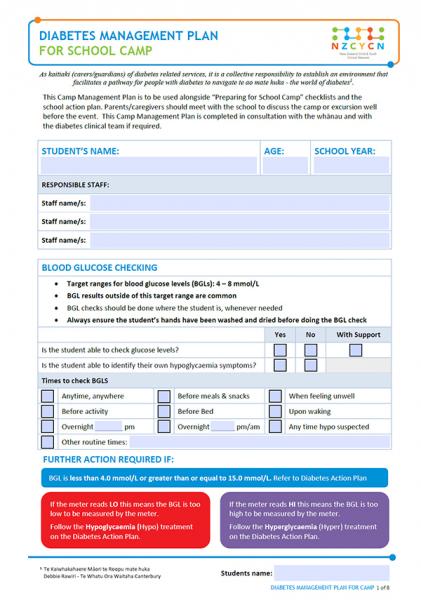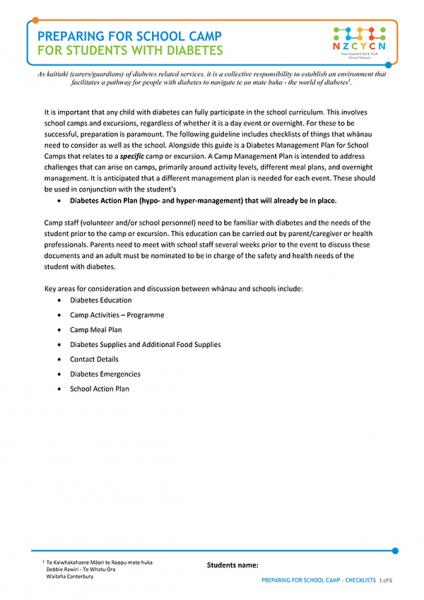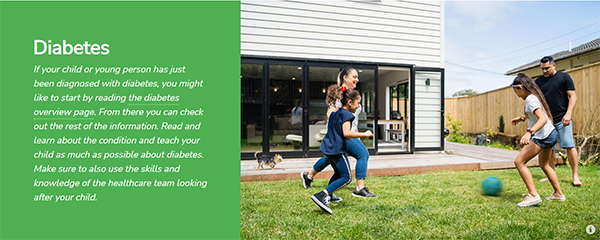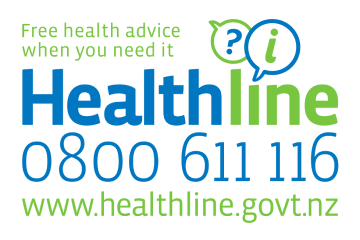Creating A Safe Environment For Children With Diabetes At School
Creating A Safe Environment For Children With Diabetes At School
It's important to work closely with school staff to create a safe environment for your child with diabetes. A diabetes healthcare provider will generally work with your child or teen, your family and teachers.
Key points about creating a safe environment for children with diabetes at school
- tamariki (children) with diabetes go to early childhood education and school and participate in all educational and social activities
- every child living with diabetes has specific needs
- it's important to work closely with school staff to create a safe environment for your child or teen with diabetes
How is diabetes managed at early childhood education and school?
Tamariki with diabetes go to early childhood education and school and participate in all educational and social activities.
By working closely with the early childhood education and school staff, diabetes can be safely managed in the school environment and your child can fully participate in education based activities without discrimination.
You might like to share a 30 minute video with staff at your child's school. The Starship diabetes team developed it especially for school staff, to increase their knowledge and understanding of diabetes. It's available on the Starship website.
Watch the video - taking diabetes to school
Use of mobile phones as a medical device
Many students with diabetes use their mobile phones to receive their glucose levels from a CGM device. The Clinical Network for Children and Young People with Diabetes have developed a letter for schools. The letter explains the importance of students having access to their mobile phones for safely managing their diabetes.
See the letter for schools about mobile phones for managing diabetes (PDF, 344 KB).
Make sure you include some wording about using a mobile phone for medical reasons when you're filling out the diabetes action and management plan.
Diabetes action and management plans for early childhood education and school
It's important to recognise that every child living with diabetes has specific needs. The Clinical Network for Children and Young People with Diabetes has developed a collection of school action and management plans. These aim to support families in creating a safe environment at school for diabetes care.
For families: Save the documents and complete the plans electronically. You can then share the documents with your child's school. Your diabetes team can give you support and help if you need it.
There are action and management plans for:
- early childhood education
- primary and secondary schools
Choose the right action and management plan for your child.
Kindergarten or early childhood centres
For tamariki who have 2 injections of insulin each day
2024 NZ diabetes action plan (PDF, 276 KB)
2024 NZ diabetes management plan (PDF, 617 KB)
For tamariki who have multiple injections of insulin each day
2024 NZ diabetes action plan (PDF, 187 KB)
2024 NZ diabetes management plan (PDF, 401 KB)
For tamariki who use an insulin pump
2024 NZ diabetes action plan (PDF, 276 KB)
2024 NZ diabetes management plan (PDF, 531 KB)
Primary and secondary schools
For tamariki and rangatahi (young people) who have 2 injections of insulin each day
2024 NZ diabetes action plan (PDF, 426 KB)
2024 NZ diabetes management plan (PDF, 832 KB)
For tamariki and rangatahi who have multiple injections of insulin each day
2024 NZ diabetes action plan (PDF, 231 KB)
2024 NZ diabetes management plan (PDF, 822 KB)
For tamariki and rangatahi who use insulin pumps
2024 NZ diabetes action plan (PDF, 426 KB)
2024 NZ diabetes management plan (PDF, 2.12 MB)
What are some other diabetes resources for schools?
As well as an action and management plan, there are other resources you need to give your child's education centre or school.
School resource flip chart - this was in your newly diagnosed pack from Diabetes New Zealand.
You can download extra copies of the school resource flip chart (PDF, 2.64 MB) at the Diabetes New Zealand website.
Hypo kit - this will include items to use if your child has a 'hypo' or low blood glucose level. You'll need to provide clear instructions about how to give the items to your child. This can also go into the school management plan. Items could include glucose tablets, juice drinks as well as carbohydrate snacks (such as muesli bars).
How can we create a safe environment for my child with diabetes at school?
It's important for families to work closely with school staff to create a safe environment for diabetes. Arrange a meeting with the school as early as possible to discuss the action and management plan and the care your child needs.
Important points to cover with school staff
Completing management plans
It's best for families and whānau to complete management plans with school staff. There is a lot of online and written material to help support school and early childhood education staff. If needed, healthcare professionals can help with planning. But, whānau know their child or teen best and should be the main contact.
Wearing medical identification
Tamariki with diabetes should always wear medical identification (such as a wrist band or bracelet) at school.
Testing glucose levels and injecting insulin
It's very important to allow tamariki with diabetes to:
- test their glucose levels in the classroom if they wish
- inject insulin in public if they wish
It's also important to offer them privacy to do either of these if they prefer.
When there are symptoms of hypo
Never leave tamariki with type 1 diabetes alone when they are having symptoms of hypo.
Don't prevent them from eating or drinking to treat or prevent a hypo.
School camps
It's important that any child with diabetes can fully participate in the school curriculum. This involves school camps and outings - both day and overnight events. For these to be successful, preparation is very important.
The following include checklists of things that family, whānau and the school need to consider.
See the diabetes management plan for school camp (PDF, 711 KB).
See the whānau and school checklists (PDF, 415 KB).
Exams
There are special conditions for rangatahi living with type 1 diabetes sitting NCEA or Cambridge examinations. Talk to your child's school at the beginning of each academic year.
See some information about diabetes and exams for young people with diabetes (PDF, 135 KB).
Your child's school needs to submit a 'specialist medical report' to NZQA, early each academic year, for each young person. This report confirms the special requirements for students with diabetes.
See examples of the medical certificate for type 1 and type 2 diabetes. These certificates will be part of the NZQA application for students with diabetes.
See the sample medical certificate for students with type 1 diabetes (PDF, 171 KB).
See the sample medical certificate for students with type 2 diabetes (PDF, 163 KB).
See more KidsHealth content on diabetes
This page last reviewed 20 November 2023.
Do you have any feedback for KidsHealth?
If you have any feedback about the KidsHealth website, or have a suggestion for new content, please get in touch with us.
Email us now